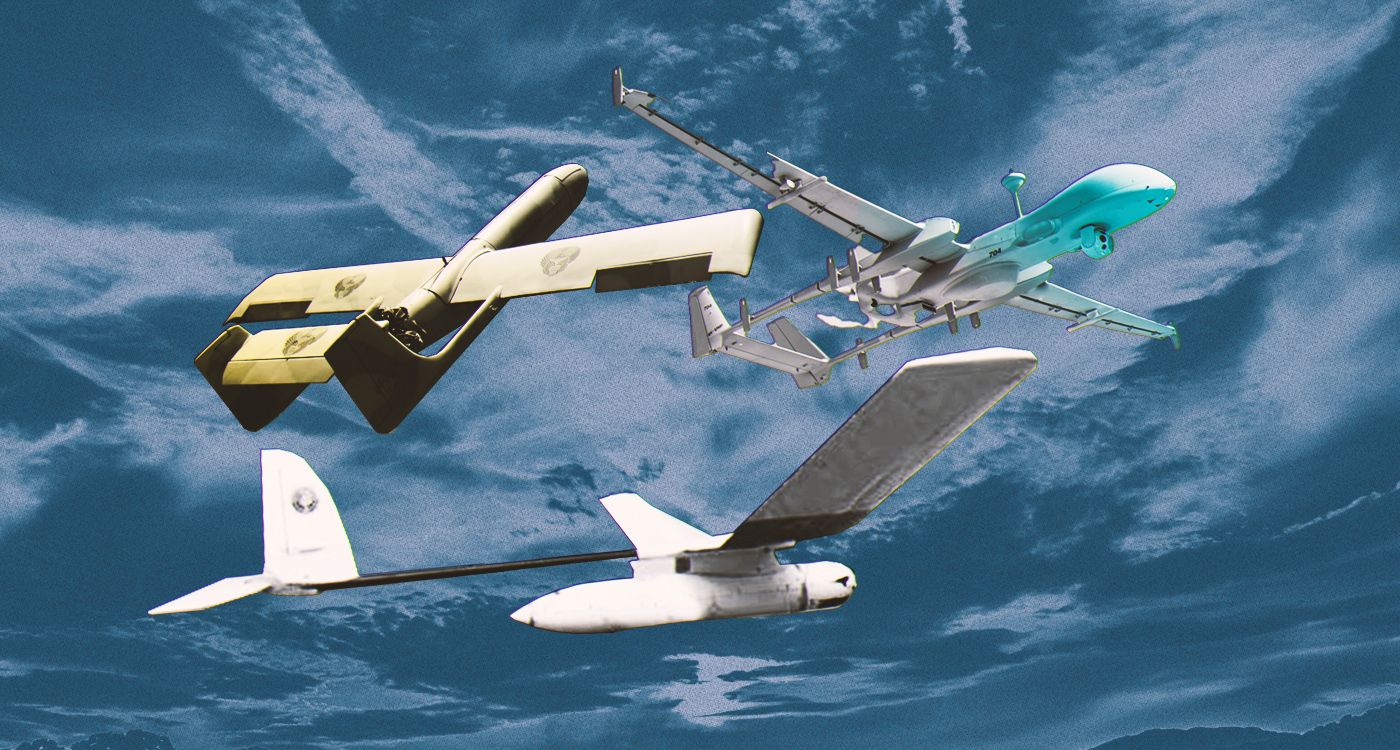
They buzz incessantly overhead. Videos show them dropping explosives through the hatch of an armored vehicle: drones have become one of the weapons of choice in the ongoing war in the Middle East. From Hamas to Israel to Hezbollah, here's a look at the different ways the warring parties are using them.
A constant buzzing fills the skies of some parts of the Middle East, mainly Lebanon. From Beirut to Gaza, the sound of drone engines has become a part of daily life for the populations targeted by the Israeli military.
As with other 21st-century conflicts, drones have taken a central role in the Israel-Hamas war. From small, locally-made drones used by Hamas, to Israeli models carrying multi-million-dollar missiles, and kamikaze drones deployed by the pro-Iranian axis, here’s what you should know about the use of drones since the war started a year ago.
Hamas: A Makeshift Arsenal...
At the break of dawn on Saturday, October 7, 2023, Hamas attacked the border towns of Gaza in Israel. To maximize the element of surprise, the organization sent swarms of drones loaded with explosives ahead of its ground forces.
According to GEO magazine, these are small commercial drones modified to carry explosive payloads, with a total cost of no more than $6,000. Their mission? To strike observation and communication posts, effectively “blinding” Israel’s front line of defense.
However, Hamas’s use of drones during the attack extends beyond this role. These unmanned aerial vehicles (UAVs) also function as bombers. Rather than carrying just one explosive payload, they are fitted with a dropping mechanism that enables them to transport multiple munitions, such as grenades or mortar shells.
Applying the Lessons Learned from Ukraine
Barracks, exposed soldiers, and armored vehicles with open hatches were among the many targets attacked by these mini bombers. Their use has been notably documented by the cameras they are equipped with, which Hamas has quickly showcased in its propaganda videos.
While October 7 marked the first confirmed use of drones by Hamas, this event primarily underscores how the Palestinian group has drawn lessons from 21st-century conflicts. It seems they have successfully integrated insights gained from the Russian invasion of Ukraine, which began in February 2022.
To address their technological and material disadvantages, Ukrainian military units began employing similar tactics, which enabled them to execute precise strikes, reconnaissance, and surveillance missions while minimizing risks to their soldiers.
The drones' low cost and ability to evade sophisticated air defense systems made them an ideal asymmetric weapon. This approach was quickly adopted by Russian forces as their technological edge on the battlefield began to wane.
Hezbollah: Iran's Laboratory...
Yet, Hamas is not the only group in the conflict that has taken cues from the lessons of Ukraine. Since October 8, Hezbollah in southern Lebanon has also been making extensive use of drones.
Like the Russian and Ukrainian forces, this Iran-backed group uses drones for reconnaissance, surveillance, and precision strikes.
However, unlike its Palestinian counterpart, Hezbollah has access to more sophisticated equipment. To counter Israel's technological superiority, particularly in aerial operations, the group has even created a specialized unit. This advantage largely comes from its Iranian support, as Tehran has developed significant expertise in drone technology over the past few years.
Despite facing sanctions, Iran has successfully built a domestic industry that does not rely on foreign suppliers.
To test its new weapons in real-world conditions, Iran relies on its proxies across the region. Groups like the “Islamic Resistance in Iraq” and the Houthis benefit from this expertise, which is directly provided by members of the Islamic Revolutionary Guard Corps—the ideological army of Tehran—who are dispatched to train them on-site.
Striking from Afar at Low Cost
Hezbollah is no exception to this trend. It employs at least a dozen different types of drones, some of which are manufactured in Lebanon. This arsenal includes modified commercial drones for reconnaissance and precision strikes, as well as larger devices designed exclusively for military purposes.
The most advanced among them, the Shahed-129, is capable of carrying munitions over a distance of 2,000 km, classifying it as a Medium-Altitude Long-Endurance (MALE) drone.
However, the true strength of this arsenal lies in its loitering munitions—drones designed to crash into their targets, boasting a range that exceeds 100 km, exemplified by the "Ababil" model.
Operating as affordable cruise missiles, these munitions can reach deep into Israeli territory.
Israel: Harnessing Artificial Intelligence
The pro-Iran axis is not the only player in this conflict using loitering munitions. Israel has also tapped into its advanced industrial capabilities to enhance its war efforts.
In the battles in Gaza, the Israeli forces have deployed loitering munitions such as the "Spike Firefly" and "LANIUS," developed by leading Israeli firms Rafael Systems and Elbit Systems, respectively.
Like Hamas's kamikaze drones, these munitions are designed to carry a light payload, making them particularly effective in the densely populated urban environment of Gaza.
Beyond these kamikaze drones, Israel also employs small drones fitted with machine guns. The NGO Euro-Med Human Rights Monitor has reported that these autonomous quadrotor devices, in conjunction with loitering munitions, are utilized to create "kill zones."
When integrated with artificial intelligence, these machines have the potential to autonomously strike anyone who enters a designated area, activating once facial recognition software identifies them—either closely or from a distance—as affiliated with Hamas.
However, the Israeli military has consistently denied employing such methods, asserting that human oversight is an essential component of their decision-making process.
Surveillance and Targeted Assassinations
The true strength of the Israeli military lies in its fleet of Medium Altitude Long Endurance (MALE) drones.
They operate three distinct models: the Hermes 450 and 900 from Elbit Systems, and the Heron TP from Israel Aerospace Industries (IAI). The Heron TP is often referred to as "MK" by the Lebanese, a nickname that has expanded to include all Israeli drones that enter Lebanese airspace.
These drones are primarily tasked with monitoring specific areas or targets. By circling above their designated locations, they collect real-time images and data, providing continuous situational awareness.
Their extensive range and endurance—exceeding 30 hours—greatly enhance this capability. As a result, the persistent buzzing of these drones has become a common sound not only in Gaza but also in southern Lebanon and Beirut.
However, these drones do much more than just gather intelligence. They are also equipped with target designation systems, typically utilizing lasers. In this capacity, the drone illuminates the target and transmits the information to a ground vehicle, fighter jet, or naval vessel, which then launches munitions aimed at the target.
Moreover, the drone can carry out this operation independently if it is armed. All three models mentioned earlier can be fitted with low-caliber bombs or missiles, allowing them to remain airborne over potential targets for hours while awaiting clearance to strike. This capability makes them frequently used for targeted assassinations.
Additionally, these drones fulfill another vital role. By endlessly circling the skies over Lebanon and Gaza, Israeli drones constantly remind those below who controls the airspace. This overt and persistent presence serves as a form of occupation in its own right, significantly impacting the psychological state of the people beneath them.




Comments